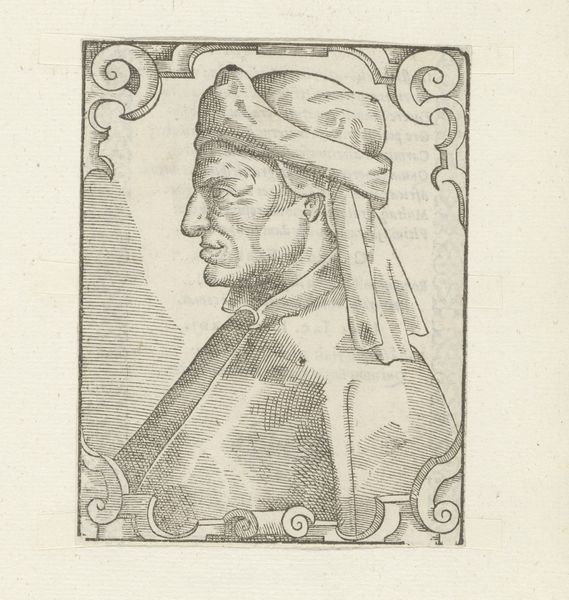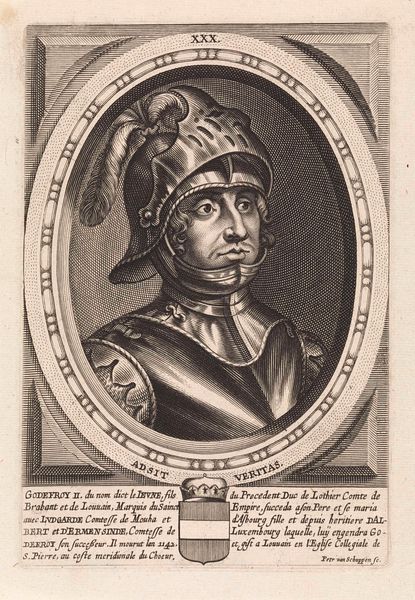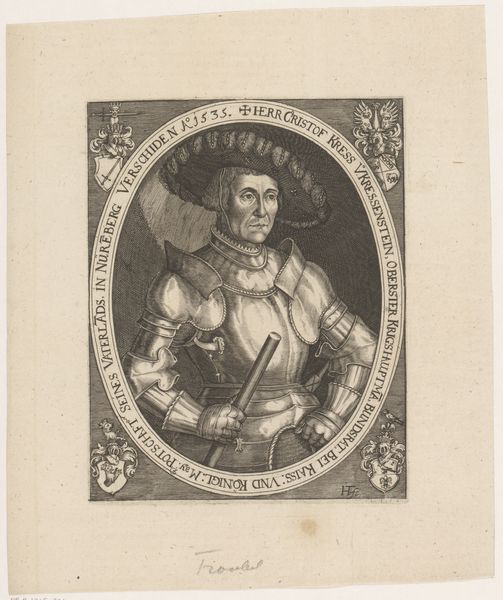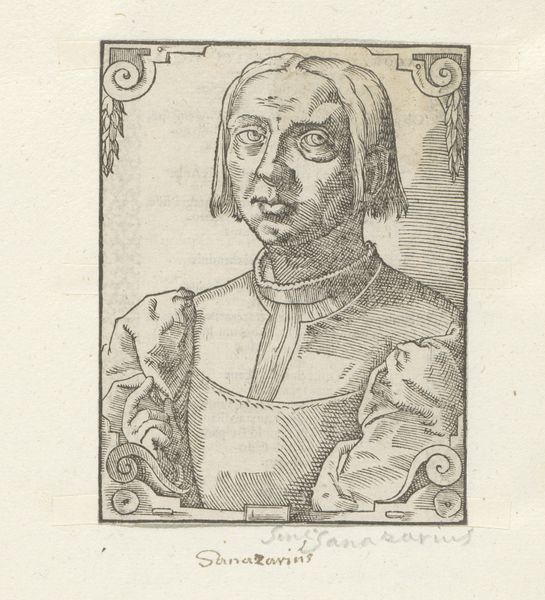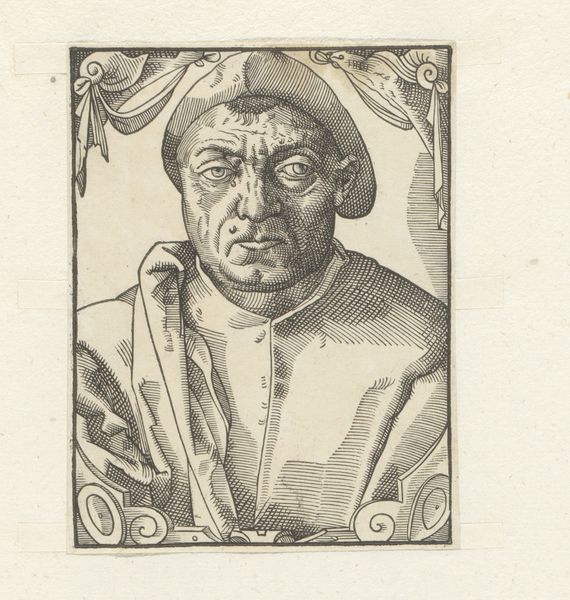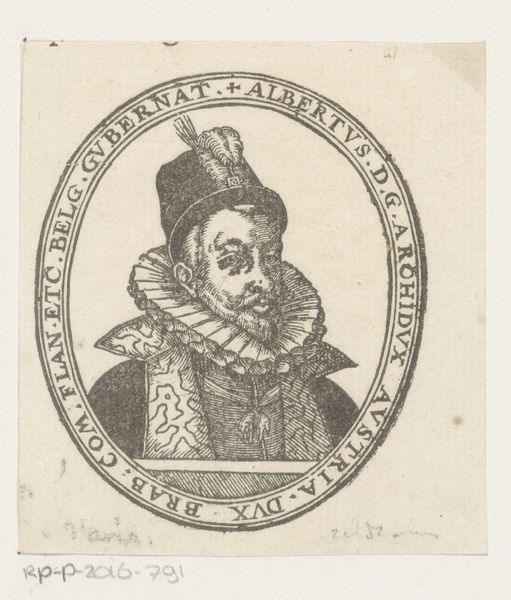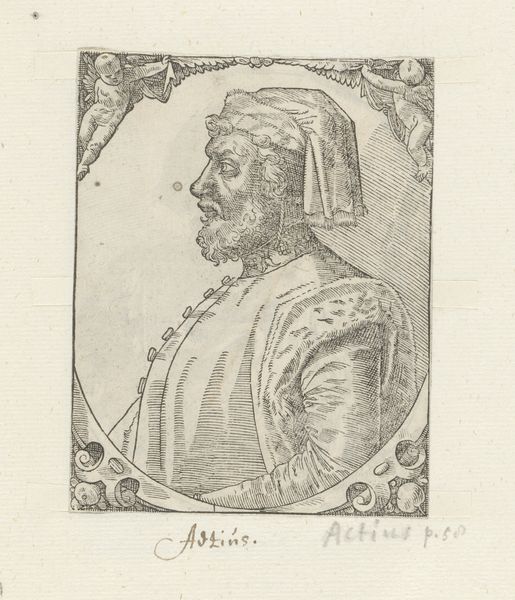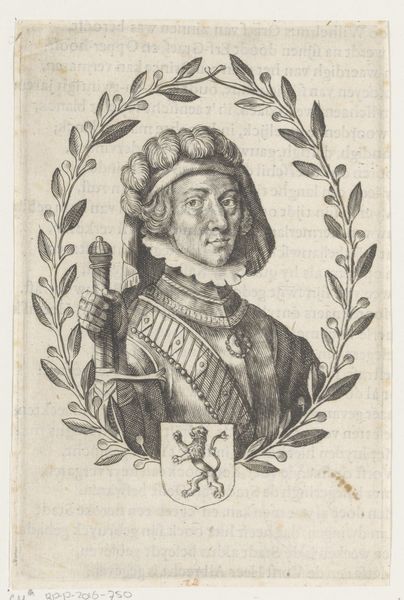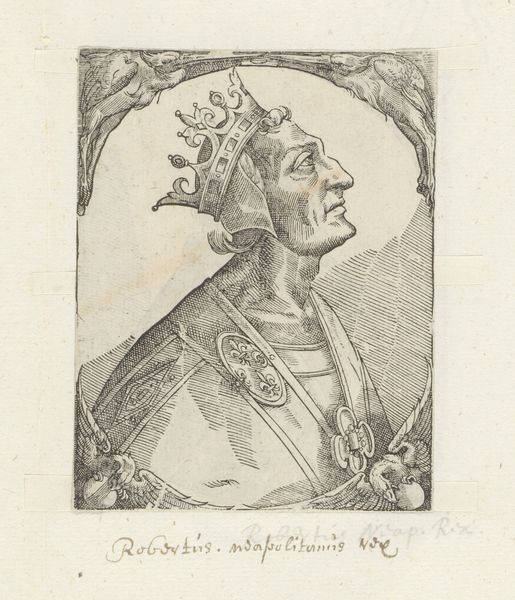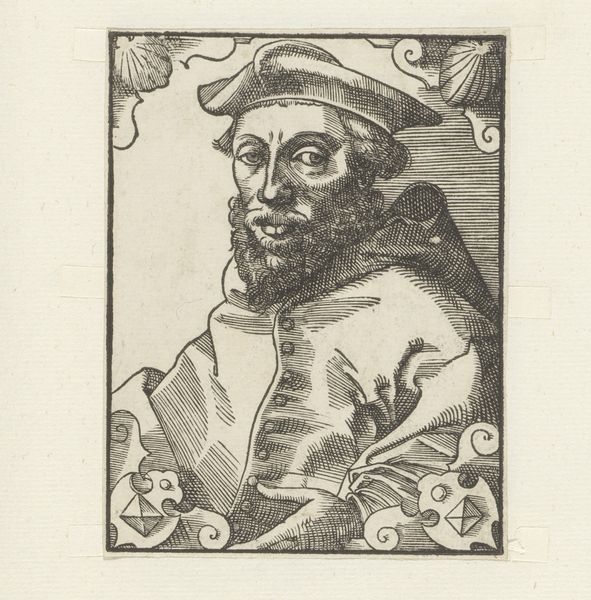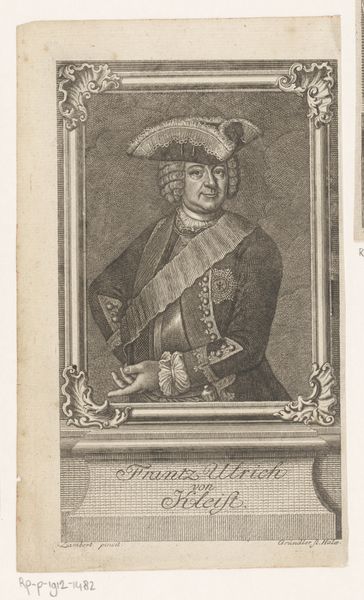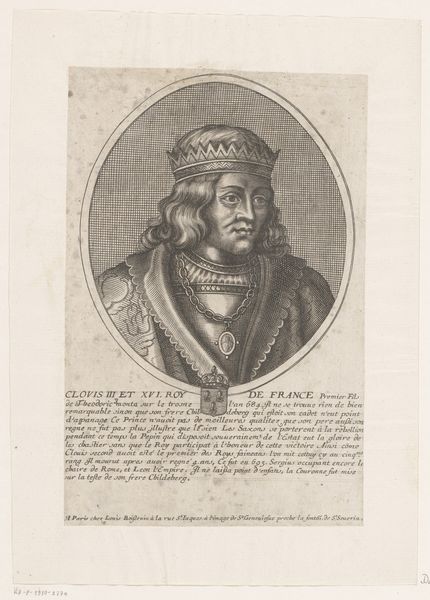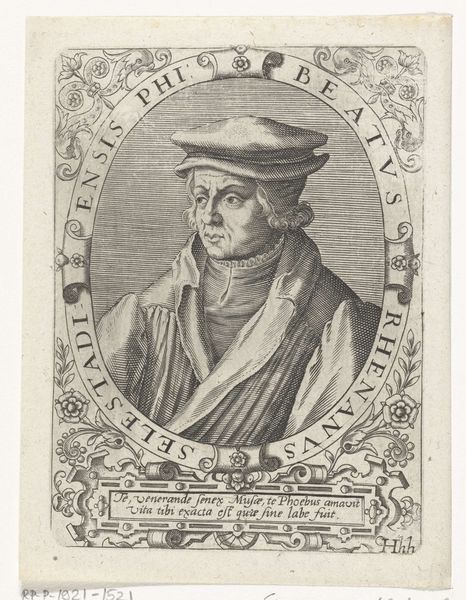
print, engraving
#
portrait
# print
#
old engraving style
#
11_renaissance
#
history-painting
#
italian-renaissance
#
engraving
Dimensions: height 107 mm, width 82 mm
Copyright: Rijks Museum: Open Domain
Curator: Looking at this small portrait of Dante Alighieri, made between 1549 and 1577 by an anonymous artist, a couple of things strike me right away. Editor: It definitely carries the gravity expected of such an iconic figure. The meticulous engraving really captures his likeness, while that laurel crown is quite imposing. Curator: Yes, let's consider what this portrait means, or what it signifies. The laurel, a symbol of poetic and academic triumph, casts Dante as the hero of his own narrative, despite historical attempts to undermine his role because of political reasons and exiles. Editor: Absolutely. And if you zoom in, you can appreciate the material processes behind the print. The fine lines, created by meticulously carving into a metal plate, speak volumes about labor involved and commitment required. It underscores printmaking’s significance, often viewed as "lesser" than painting. Curator: Precisely! Printmaking facilitated democratization of images and knowledge at that time. A portrait like this enabled wider access to the figure of Dante and allowed to reclaim him as an Italian symbol during shifting Renaissance identities. He gains presence with his clothing style of the period. Editor: It seems also a commentary on consumption, wouldn't you say? Such reproduction democratizes imagery and brings this face, this persona to a potentially wide and eager Renaissance audience. This simple engraving had an impressive influence due to replicability, spreading his fame far and wide. Curator: I would even suggest there's a powerful commentary here. He represents, arguably, the struggle for artistic independence and intellectual integrity, challenging hierarchies of both thought and artistic creation during turbulent sociopolitical climate, but in the past now reclaimed to unite Italy. Editor: Agreed, I can definitely appreciate its place and implications now, and by considering the labour and materials, even challenge some presumptions of “fine art.” What initially appeared as a simple image holds profound weight under such material examination, especially as an important touchstone of visual literacy for those of the era. Curator: Indeed. Approaching works such as these from both a historically conscious position, as well as accounting for material means, enables richer encounters that give a much more nuanced appreciation for their position both historically and for us today.
Comments
No comments
Be the first to comment and join the conversation on the ultimate creative platform.
